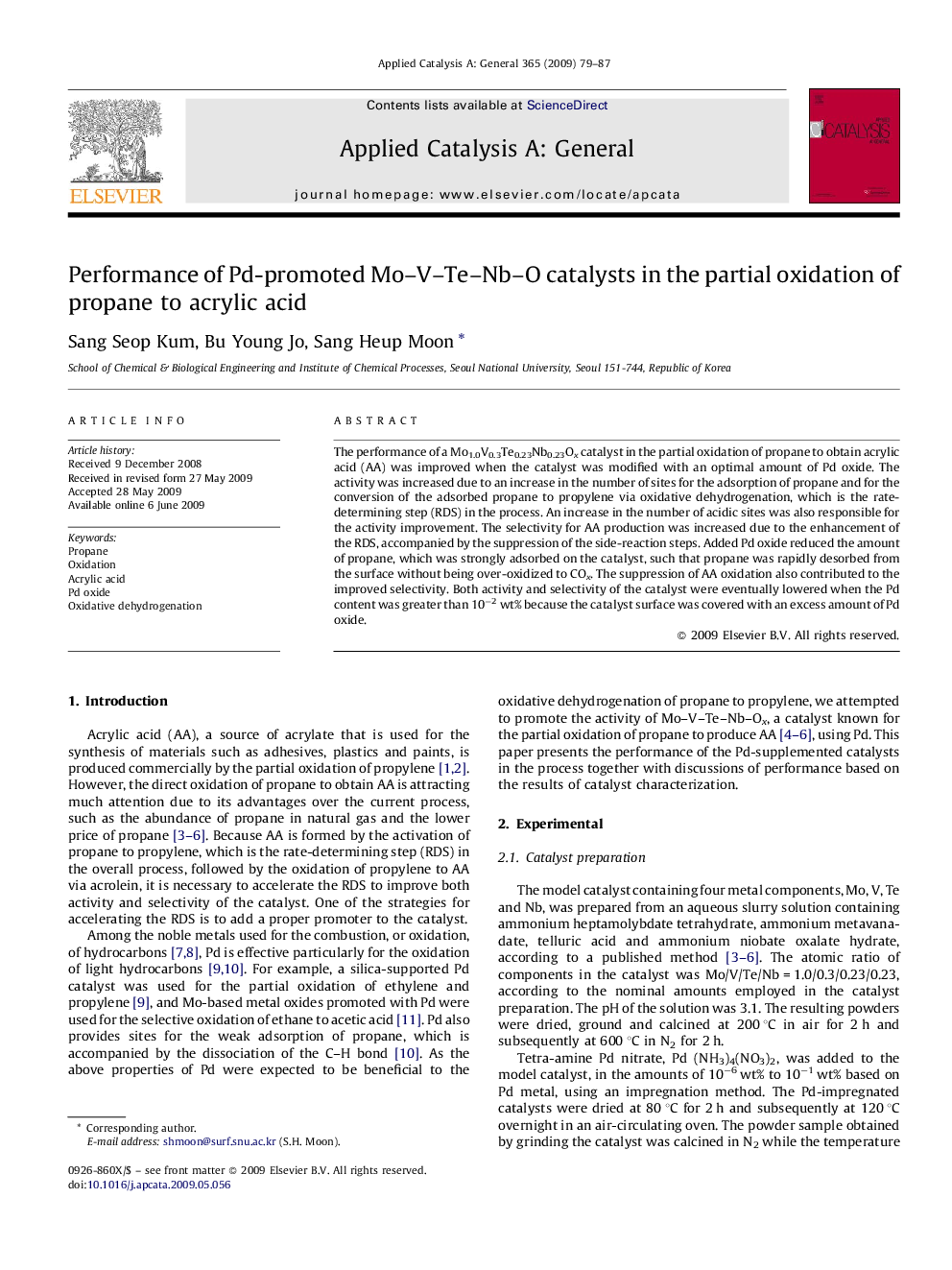| Article ID | Journal | Published Year | Pages | File Type |
|---|---|---|---|---|
| 42610 | Applied Catalysis A: General | 2009 | 9 Pages |
The performance of a Mo1.0V0.3Te0.23Nb0.23Ox catalyst in the partial oxidation of propane to obtain acrylic acid (AA) was improved when the catalyst was modified with an optimal amount of Pd oxide. The activity was increased due to an increase in the number of sites for the adsorption of propane and for the conversion of the adsorbed propane to propylene via oxidative dehydrogenation, which is the rate-determining step (RDS) in the process. An increase in the number of acidic sites was also responsible for the activity improvement. The selectivity for AA production was increased due to the enhancement of the RDS, accompanied by the suppression of the side-reaction steps. Added Pd oxide reduced the amount of propane, which was strongly adsorbed on the catalyst, such that propane was rapidly desorbed from the surface without being over-oxidized to COx. The suppression of AA oxidation also contributed to the improved selectivity. Both activity and selectivity of the catalyst were eventually lowered when the Pd content was greater than 10−2 wt% because the catalyst surface was covered with an excess amount of Pd oxide.
Graphical abstractThe activity of Pd-promoted Mo1.0V0.3Te0.23Nb0.23Ox catalysts for the partial oxidation of propane was increased due to an increase in the number of sites for the adsorption of propane and for the oxidative dehydrogenation of propane to propylene. The selectivity for acrylic acid production was increased due to the enhancement of the oxidative dehydrogenation step (RDS) and the suppression of the side-reaction steps.Figure optionsDownload full-size imageDownload as PowerPoint slide
